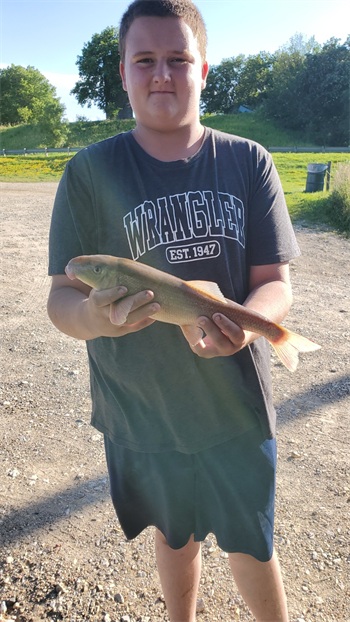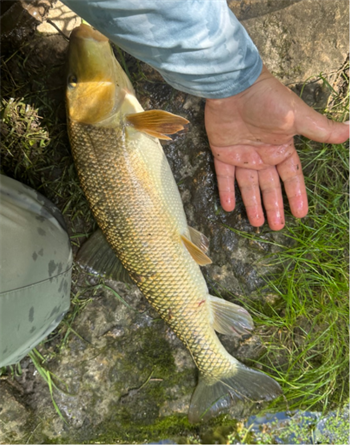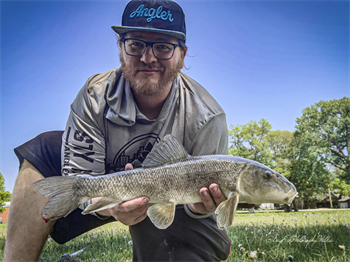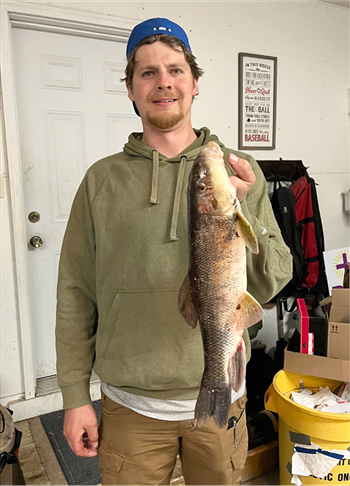Fish Iowa - Fish Species - White Sucker
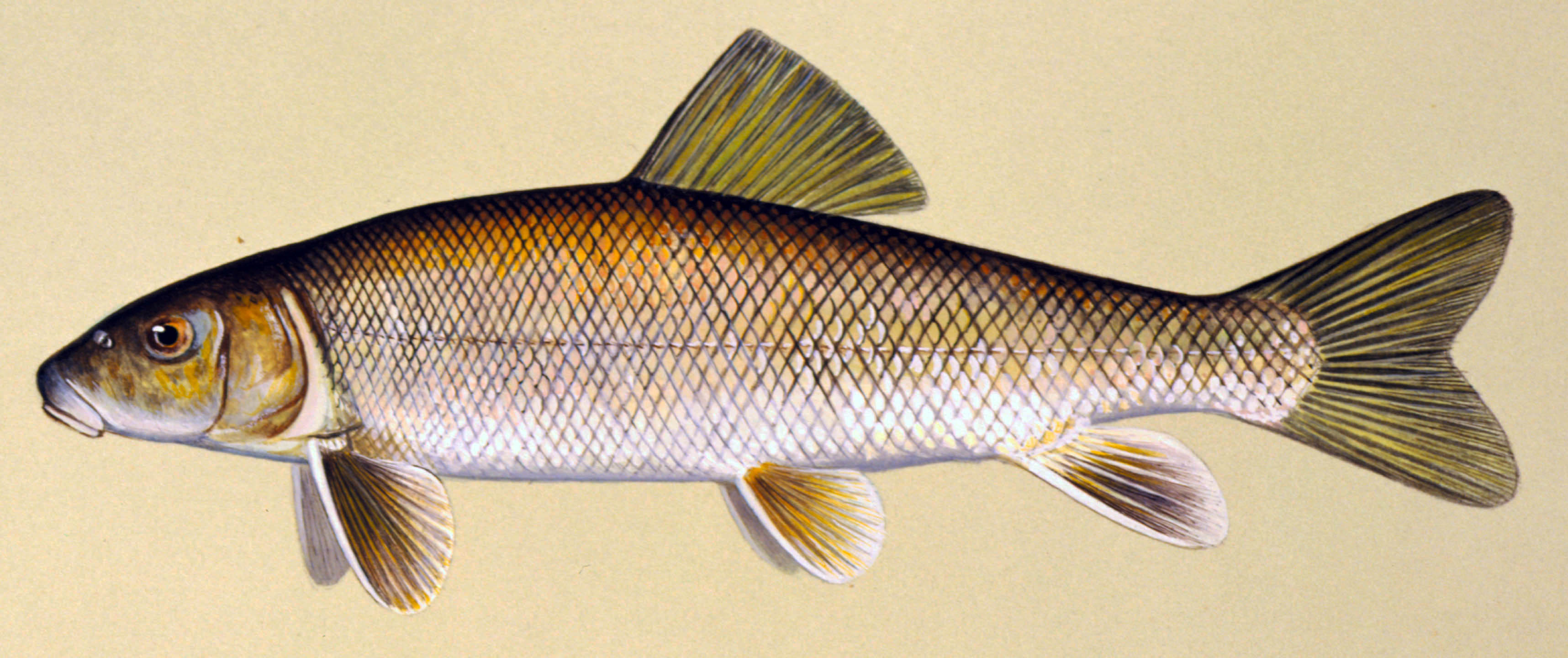
Characteristics
A slender, fine-scaled sucker that is tinted dark greenish along the back and sides, with a brassy or silvery luster on the sides and a white belly. The dorsal and tail fin are dusky to clear. Breeding males may become very dark colored and develop tubercules over the head, fins and body. The distinctive feature that separates this species from other suckers and redhorses is a complete lateral line with 55-85 small scales. Its lips are fleshy and heavy with many small, wart-like projections. The dorsal fin is straight or slightly concave with 10-13 rays, anal fin with 7 rays, and the pelvic fin with 10-11 rays. Sexual dimorphism may occur in adult brood fish. White Sucker are known to hybridize with closely related catostomids. Adults commonly reach 10- to 16-inches long and weigh up to 2-pounds.
Foods
Variety of bottom organisms such as aquatic insect larvae, small mollusks, crustaceans, and various terrestrial worms
Expert Tip
Most White Suckers are caught accidentally by anglers fishing with worms on the bottom of streams.
Details
White Suckers are highly adaptable to differing habitats and changing environmental influences, it is tolerant of turbid and polluted waters.
Spawning starts with migratory spring runs that may be started by runoff from early snow-melt. Actual spawning occurs in late spring when water temperatures are 57 to 68 degrees. Eggs are broadcast at random and are adhesive. Eggs incubate in 5 to 7 days. Spawning males are sociable, occupying spawning shoals before the females. Several males may spawn a single female; often two males spawn a single female, similar to the behavior of redhorses. Spawning takes place in swift or flowing water over bottom substrates of rubble or gravel. A 19-inch female produces around 93,000 eggs. Both sexes of White Sucker mature at age 2. Growth of White Sucker ranges from 7-inches at age 1 to 18.5 inches at age 10.
White Suckers are a natural prey species for Northern Pike, Muskellunge, Walleye, Sauger, Largemouth Bass and Smallmouth Bass. Juvenile suckers are often cultured for food to propagate and raise predatory fish. They are often sold as bait fish.
Recent stream sampling information is available from Iowa DNR's biological monitoring and assessment program.
Distribution Map

Statewide, mostly in small rivers and streams
See our most recent distribution data for this species on the Iowa DNR's Bionet application.
State Record(s)
Master Angler Catches
Fish Surveys
Tip: Click Species Length by Site, then use the dropdown to filter by fish species of interest.Where this Fish Is Found
Alice Wyth Lake
Avenue of the Saints Pond
Backbone Lake
Badger Lake
Baileys Ford
Bankston Creek
Bass Creek
Bear Creek
Bear Creek
Beeds Lake
Big Creek Lake
Big Mill Creek
Bigalk Creek
Bloody Run Creek
Bohemian Creek
Brush Creek
Buck Creek
Cedar Lake
Cedar River (above Nashua)
Clear Creek (Lansing)
Clear Creek (New Albin)
Clear Lake
Coldwater Creek
Coon Creek
Des Moines River (Saylorville to Red Rock)
Des Moines River (Stratford to Saylorville Lake)
East Okoboji Lake
East Pine Creek
Elkader Impoundment
Fountain Springs
Glovers Creek
Grannis Creek
Hewett and Ensign Creeks (Ensign Hollow)
Hickory Creek
Iowa River (Marshalltown to Coralville Lake)
Joy Springs
Koutny Pond
Lake Oelwein
Lidtke Impoundment
Little Sioux River (Correctionville to Missouri R)
Little Sioux River (Linn Grove to Correctionville)
Little Sioux River (state line to Linn Grove)
Little Spirit Lake
Little Turkey River
Lylah's Marsh County Park
Maquoketa River (trout portion)
McLoud Run
Meyers Lake
Mill Creek
Mink Creek
Missouri River (Council Bluffs to state line)
Missouri River (Little Sioux to Council Bluffs)
Missouri River (Sioux City to Little Sioux)
Monastery Creek
Mossy Glen
North Bear Creek
North Raccoon River (Perry to Van Meter)
Otter Creek
Ozark Springs
Paint Creek
Patterson Creek
Pine Creek
Ram Hollow
Red Rock Reservoir
Richmond Springs
Roberts Creek Lake
Saylorville Reservoir
Schram Pond
Shell Rock River (above Greene)
Sny Magill Creek
South Bear Creek
South Cedar Creek
Spirit Lake
Spring Branch
Spring Creek
Swan Lake
Swiss Valley Creek
Tete des Morts River
Triangle Park Pond
tributaries to Tete des Morts River
Trout Run
Turkey River (above Clermont)
Turkey River (below Clermont)
Turtle Creek
Twin Bridges
Twin Springs
Upper Dam Impoundment
Upper Iowa River (above Decorah)
Upper Iowa River (below Decorah)
Upper Swiss Valley Creek
Volga Lake
Volga River
Wapsi River (Trout Section)
Wapsipinicon River (state line to Tripoli)
Wapsipinicon River (Troy Mills to Oxford Junction)
Waterloo Creek
Waucoma Impoundment
West Nishnabotna River
West Okoboji Lake
White Pine Hollow
Winnebago River
Yellow River (Trout Section)

